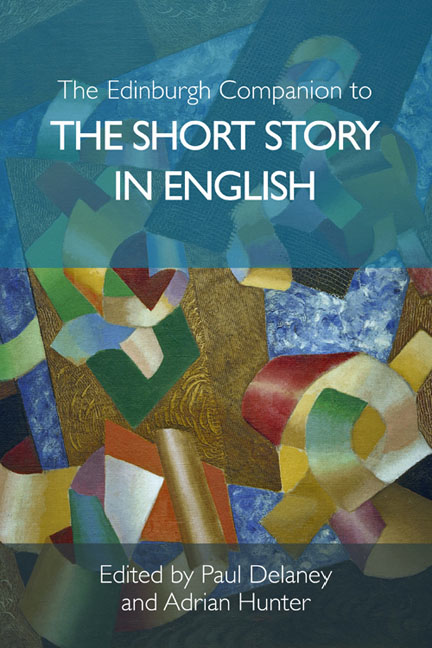Book contents
- Frontmatter
- Contents
- Acknowledgements
- Notes on Contributors
- Introduction
- Part I Historicising the Short Story
- Part II Publishing the Short Story
- Part III Forms of the Short Story
- Part IV Placing the Short Story
- 14 Regionalism and the Short Story
- 15 The Short Story and the City
- 16 The Short Story in Suburbia
- 17 The Short Story and the Environment
- Part V Identity and the Short Story
- Index of Short Story Titles
- General Index
15 - The Short Story and the City
from Part IV - Placing the Short Story
Published online by Cambridge University Press: 18 December 2019
- Frontmatter
- Contents
- Acknowledgements
- Notes on Contributors
- Introduction
- Part I Historicising the Short Story
- Part II Publishing the Short Story
- Part III Forms of the Short Story
- Part IV Placing the Short Story
- 14 Regionalism and the Short Story
- 15 The Short Story and the City
- 16 The Short Story in Suburbia
- 17 The Short Story and the Environment
- Part V Identity and the Short Story
- Index of Short Story Titles
- General Index
Summary
THE TRANSFORMATION OF URBAN space from what Friedrich Engels termed ‘the great towns’ in the middle decades of the nineteenth century to the ‘metropolis’ of the twentieth century coincides with an elevation in the short story's status as a literary genre. This is not, perhaps, an obvious connection: why would a writer choose to address the city – evoking as it does ideas of architectural and spatial largeness, sociocultural diversity and openness – in a form that is commonly associated with aesthetic principles of brevity and strict economies of scale? The history of modern literature is full of examples of novels that seek to represent the vastness of cities, from Honoré de Balzac's Ferragus: Chief of the Devorants (1833) – which captures what Italo Calvino called ‘the monster that is Paris’ – to the ‘Hibernian Metropolis’ of Dublin in James Joyce's Ulysses (1922). It is not difficult to appreciate why Balzac, Joyce and others felt that the novel was an appropriate form to contend with the magnitude and multifariousness of the metropolis; as we will see, however, the short story has had its own distinctive relationship to the city, and has made a contribution, quite different from the novel's, to the literature of urban modernity.
In The Painter of Modern Life (1863), Charles Baudelaire offered the following analysis of Edgar Allan Poe's ‘The Man of the Crowd’, a story which for the French author captured the quality of ‘life in the capital cities’:
Do you remember a picture (for indeed it is a picture!) written by the most powerful pen of this age and entitled The Man of the Crowd? Sitting in a café, and looking through the shop window, a convalescent is enjoying the sight of the passing crowd, and identifying himself in thought with all the thoughts that are moving around him. He has only recently come back from the shades of death and breathes in with delight all the spores and odours of life; as he has been on the point of forgetting everything, he remembers and passionately wants to remember everything. In the end he rushes out into the crowd in search of a man unknown to him whose face, which he had caught sight of, had in a flash fascinated him. Curiosity had become a compelling, irresistible passion.
- Type
- Chapter
- Information
- The Edinburgh Companion to the Short Story in English , pp. 242 - 255Publisher: Edinburgh University PressPrint publication year: 2018



